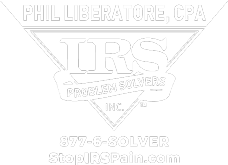
Small Business Owners May Qualify for a Home-Office Deduction
Article Highlights:
- Qualifications
- Actual Expense Method
- Simplified Method
- Home Office Expenses for Renters vs. Homeowners
- How Moving Affects the Home-Office Deduction
- Other Issues
- Gross Income Limitation
“Home office” is a type of tax deduction that applies to the business use of a home; the space itself may not actually be an office. One of the following must apply to be able to deduct home office expenses. The home office:
- Must be the taxpayer’s main place of business. OR
- Must be a place of business where the taxpayer meets patients, clients or customers. The taxpayer must meet these people in the normal course of business. OR
- Must be in a separate structure that is not attached to the taxpayer’s home. The taxpayer must use this structure in connection with their business. OR
- Must be a place where the taxpayer stores inventory or samples. This place must be the sole, fixed location of their business. OR
- Under certain circumstances, must be where the taxpayer provides day-care services.
Generally, except when used to store inventory, an office area must be used on a regular and continuing basis and be exclusively restricted to the trade or business (i.e., no personal use).
Two Methods – There are actually two methods to determine the amount of a home-office deduction: the actual-expense method and the simplified method.
- Actual-Expense Method – The actual-expense method prorates home expenses based on the portion of the home that qualifies as a home office, which is generally based on square footage. Aside from prorated expenses, 100% of directly related costs, such as painting and repair expenses specific to the office, can be deducted. Unlike the simplified method, the business is not limited to 300 square feet.
- Simplified Method – The simplified method allows for a deduction equal to $5 per square foot of the home used for business, up to a maximum of 300 square feet, resulting in a maximum simplified deduction of $1,500. A taxpayer may elect to take the simplified method or the actual-expense method (also referred to as the regular method) on an annual basis. Thus, a taxpayer may freely switch between the two methods each year.
Additional office expenses such as utilities, insurance, office maintenance, etc., are not allowed when the simplified method is used. Prorated rent or home interest and taxes are not either, although 100% of home interest and taxes are deductible if the taxpayer itemizes deductions.
To determine the average square footage when using the simplified method, no more than 300 square feet for any month can ever be used, even if the taxpayer has multiple businesses for which he or she uses space in the home. If there are multiple businesses, a reasonable method to allocate between businesses is used. Zero is used for months when there was no business use or when the business was not operating for a full year. Don’t count any month when the business use was less than 15 days.
Example: Sandra begins using 400 square feet of her home for business on July 20, 2019 and continues using the space as a home office through the end of the year. Her average monthly allowable square footage for 2019 is 125 square feet (300 x 5 months = 1,500/12 = 125).
Home Office Expenses – There are differences as to which prorated home expenses are deductible by renters and homeowners when computing the actual expense method, as illustrated in the table below.
| Prorated Expense |
Own
|
Rent
|
| Mortgage Interest |
X
|
|
| Property Tax |
X
|
|
| Rent |
X
|
|
| Homeowner’s Insurance |
X
|
|
| Renter’s Insurance |
X
|
|
| Utilities |
X
|
X
|
| Depreciation |
X
|
|
| Home Maintenance |
X
|
X
|
Note that the principal payments made on a home loan are not eligible expenses. Instead, homeowners claim a deduction for depreciation on the office portion of the home’s basis.
Rent vs. Own: What Happens If You Move or Sell the Home?
Rent – When you pay rent for your home and use part of it for business, move and then use space at the new location as a home office, for the year of the move, you’ll need to figure out the deduction separately for each home office based on the specific expenses and business use area of each home. If you don’t use space at your new living quarters for business purposes, then your home-office deduction for the year of the move will need to factor in just the expenses for the time you lived in the first home.
Own – On the other hand, if you own the home, sell it and had lived in it for two of the five years prior to the sale date, you can exclude up to $250,000 of gain ($500,000 for a married couple). However, you cannot exclude the part of any gain to the extent of depreciation you claimed for the home after May 6, 1997. For exclusion purposes, it makes a difference whether the home office was within the home itself or in a separate structure on the same property. If within the same structure, the exclusion will apply to the entire gain from the home (other than the depreciation component). If the office was within a separate structure, then the sale must be treated as two sales – one for the home and one for the office – and the gain from the office portion cannot be excluded.
Additional Issues That May Apply – As with everything tax, there are always special rules.
- Multiple Businesses – If there are multiple businesses, only one method may be used for the year – either the regular or simplified.
- Mixed-Use Property – A taxpayer who has a qualified business use of a home and a rental use of the same home cannot use the simplified method for the rental use.
- Taxpayers Sharing a Home – Taxpayers sharing a home (for example, roommates or spouses, regardless of filing status), if otherwise eligible, may each use the simplified method but not for a qualified business use of the same portion of the home.
As an example, a husband and wife, if otherwise eligible and regardless of filing status, may each use the simplified method for a qualified business use of the same home, for up to 300 square feet of different portions of the home.
- Depreciation Rate When Switching Methods – When the simplified method is used and the taxpayer subsequently switches to the actual expense method, there are no special adjustments, and the depreciation is determined in the normal manner.
Final Notes – Even if you qualify for a home-office deduction, your deduction is limited to the business activity’s gross income, which for this purpose is defined as the activity’s gross income, reduced by the home expenses that would be deductible if there were no business use (e.g., mortgage interest, property taxes, certain casualty losses), and the business expenses unrelated to the home’s use. When using the actual expense method, the disallowed amount will be carried over to the next year subject to the same limitations. However, there’s no carryover when using the simplified method.
Business use of the home is deducted on a self-employed individual’s business schedule.









